11 Killer Copywriting Tips You Should Be Doing
Author & Editor
Copywriting Team Lead
Published on: Jun 21, 2022 Updated on: Jan 3, 2025

Table of Contents
In the world of marketing, a well-told story pulls your audience in.
As a marketer, your advertising efforts should aim to convince your audience that they need your product in their lives; and you do this by telling a compelling story. This type of storytelling can only be done by agencies with experienced content marketing and copywriting services under their belt.
If you’d like to improve your own storytelling, read up, and learn from our copywriting tips.
The Impact of Effective Copywriting
Copywriting is the ultimate tool for maximizing results with minimal effort. By simply changing a few words or phrases, you can transform your message to better engage your audience and drive action. Strategic copywriting can significantly enhance your marketing efforts, providing you with the most impact for the least amount of work. Whether you're updating a headline or refining a call to action, effective copywriting can be your most powerful asset in achieving your goals effortlessly.
Here are four key benefits of effective copywriting, along with real case studies we've worked on that demonstrate its impact.
- Drives Revenue. Effective copywriting can significantly boost conversions. For instance, our work with OSP International LLC, a global project management training provider from the US, shows how strategic copywriting and a user-centric layout drove remarkable organic growth by addressing the target audience's needs and pain points with high-impact content.
In fact, Propelrr won the Netty Awards for User-Centric Design through implementing implementing research-driven strategies and executions. Highlighting the use of various data sources to develop specific hypotheses for experimentation and conversion optimization.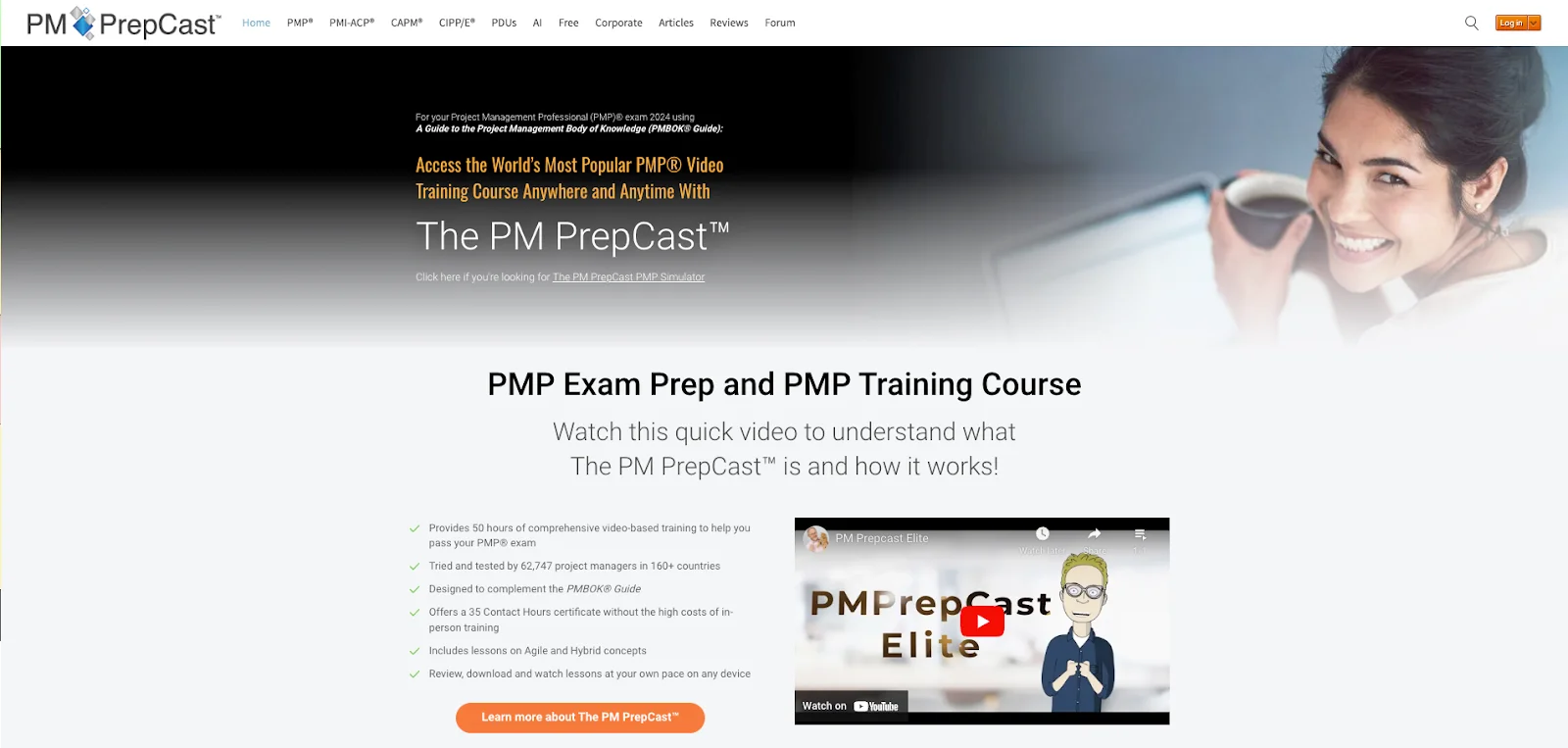
- Evokes Urgency. Creating a sense of urgency can compel customers to act quickly. This is evident in the second mini case study from MarketingSherpa, which examines the impact of a revised email newsletter headline by men's styling brand, Irreverent Gent. Irreverent Gent. The study highlights that while copywriters often rely on artificial urgency, tapping into the natural or intrinsic urgency experienced by customers led to a notable increase in sign-ups from their audience.
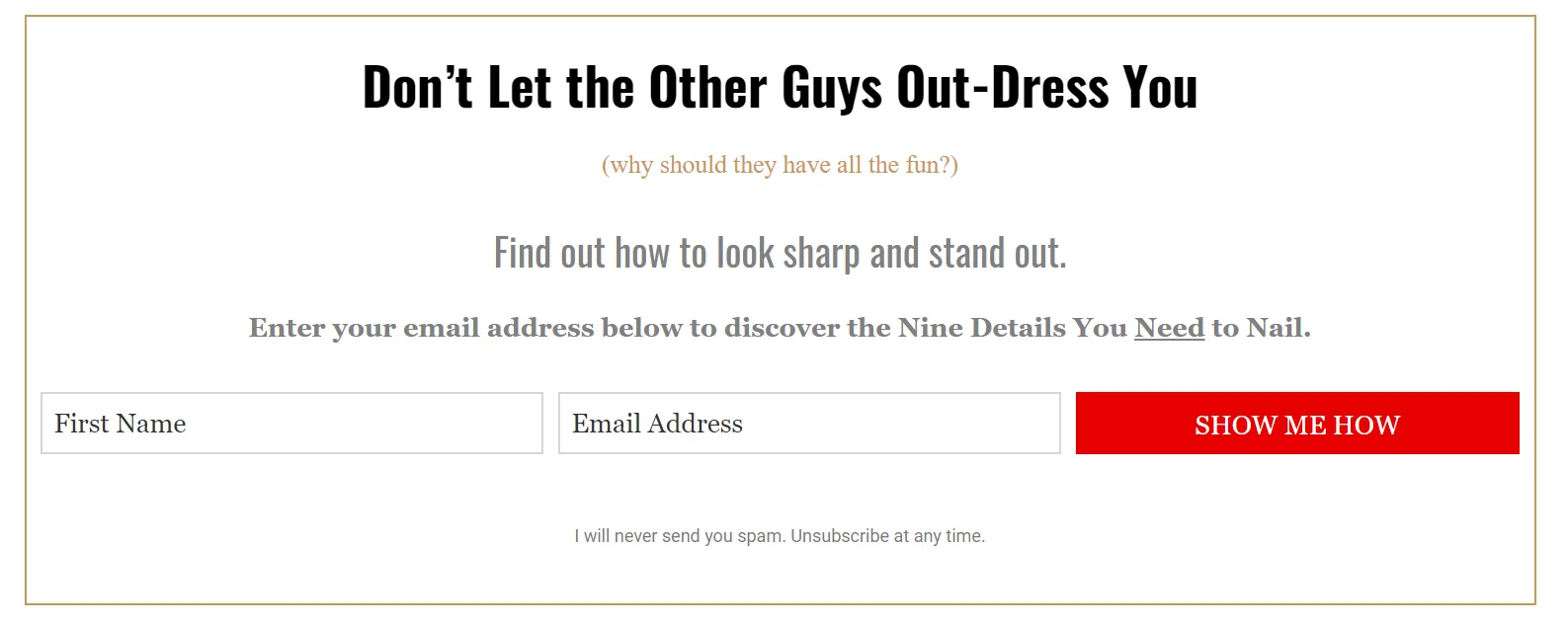
- Generates Engagement. Great copy doesn't just inform; it sparks conversations and keeps your brand top of mind. Take, for example, the impactful billboard campaigns by Angkas or Snow Cap. These campaigns show that engaging copy can do more than just deliver a message—it can create a buzz and encourage people to talk about your brand. This kind of interaction not only fosters a stronger connection with your audience but also drives conversions by making your brand memorable and relevant. By crafting compelling and thought-provoking messages, you can ensure your brand remains a topic of discussion, ultimately leading to increased customer engagement and loyalty.

- Improves Visibility. Well-crafted metadata is a cornerstone of effective SEO, significantly enhancing your website's visibility in search engine results. As highlighted in our SEO work with Wacoal Philippines, meticulous attention to metadata can yield substantial improvements. Since 2021, the Wacoal PH website faced challenges with low organic traffic, which were pinpointed during our comprehensive SEO audit.
Optimizing metadata by refining title tags, meta descriptions, and header tags ensured that each page was accurately represented and attractive to search engines. This optimization played a crucial role in improving search impressions by 59.53%.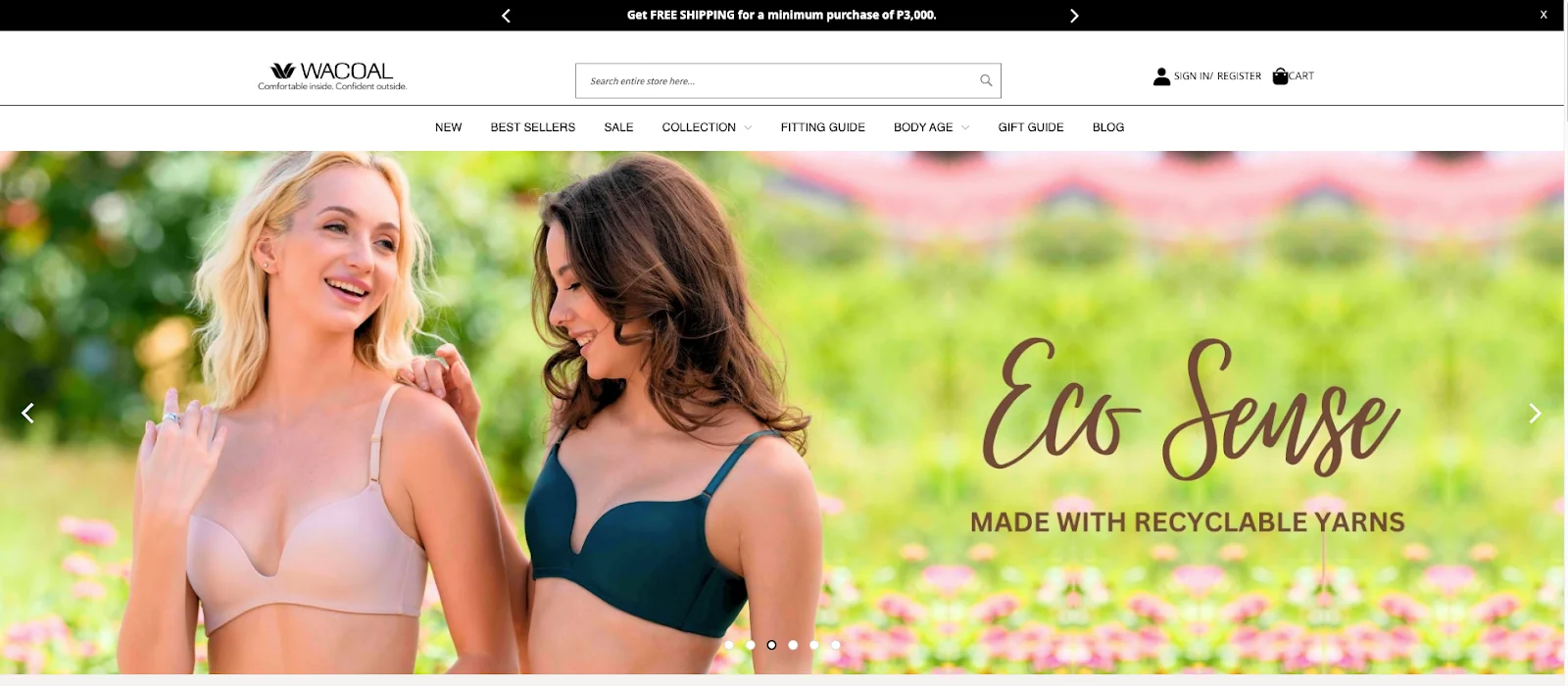
Copywriting tips for digital marketers
Now that you’ve got a good idea of how copywriting works, below are a few tips to help you hone your copywriting skills:
Read everything, including the good and the bad.
A good writer is foremost an avid reader. Read all copywriting examples you can get your hands on, both bad and good. Knowing how to distinguish between the two can help improve your copywriting skills. You'll find that, among copywriting tips, this is the one that helps you develop a finer eye for good copy as you expose yourself to different phrasing and crafting of copies.
More importantly, reading sample copies can help give you an idea of how different types of brands write theirs and how different kinds of advertising differ in the copy. Following this copywriting tip helps you understand the process better through various perspectives and voices.
Write something every day to practice brevity and clarity.
The right practice is key!
Improving any skill comes from repeating the action and learning new ways to do it. Writing something every day can help ease you into the task and make it something that comes naturally to you.
Practice the two most important elements of copywriting: brevity and clarity. Get used to state your points clearly without using too many words.
List queues as a copywriter.
Unless it’s long-form content, paragraphs containing five or more sentences are such an eyesore for readers. Don’t fall into the habit of prolonging the message you want to convey to your audience.
In copywriting, make sure that you are able to comprehensively chop up your paragraphs into meaningful sentence thoughts. Using H1 and H2 header tags not only guide your readers to the next topic but also help your UX designers map out the visual presentation of your copies.
Align visual hierarchies with content order.
A visual and content hierarchy guides the flow of your copies so that people don’t read your story out of order. A basic copywriting fundamental is always to start with the most important message at the top since this is the first thing that readers see when a page loads.
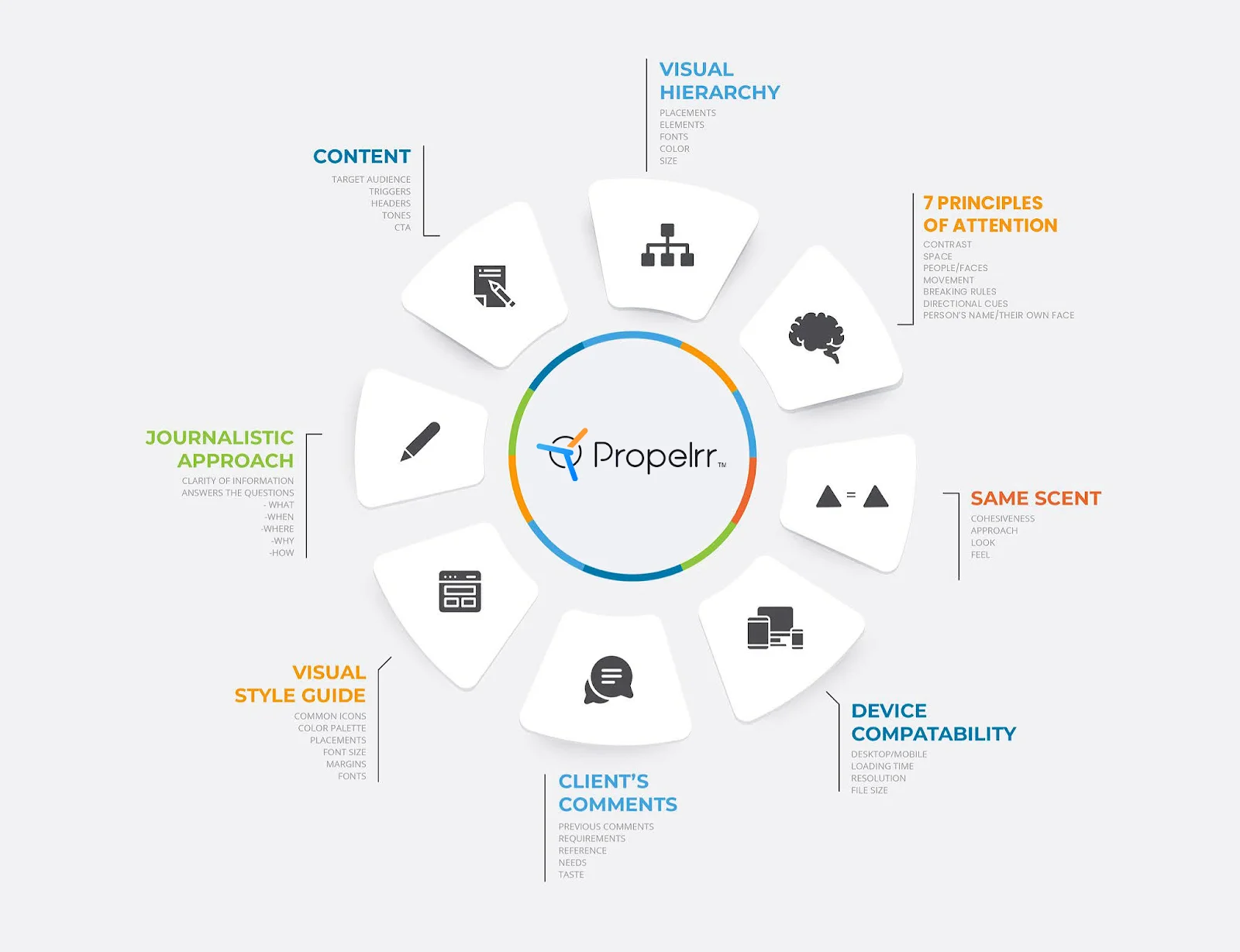
Propelrr Visual Communication Framework
Make sure your copies are engaging enough for them to actually scroll and skim the whole content. Directional cues like arrows, bold text, or highlighted words are eye magnets that help readers collect the important bits of your copy.
Review the typography and text design.
One of the most overlooked copywriting tips are those that align with the visual aspect of the copy.
As a copywriter, text, and design are both equally important if you want to create an exceptional copy. Always consider the lines, spaces, fonts, and text size of your copies.
The design concept of Fitt’s Law suggests that the bigger a copy is, the more accessible it can become to readers. Ideally, you would want a 16px text size and a 1.5 line spacing to consider the readability and highlight the importance of a specific section.
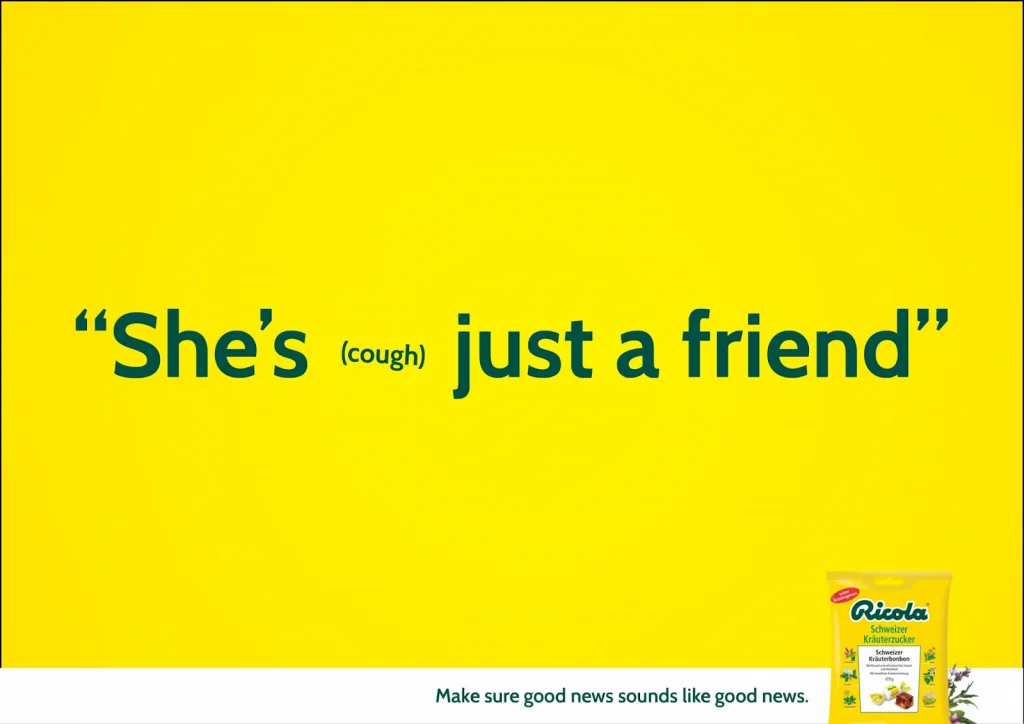
Don’t be afraid of varying text sizes and spaces in your copy, UX designers actually welcome this practice to highlight the most essential elements of your content.
Fix your copy noise.
Another rabbit hole in copywriting is stuffing too much information in your copies thinking that this can increase the chances of conversion. On the contrary, it actually does the opposite.

Another design rule, Hick’s law as we call it, reinforces this when it says that the more you put stimuli in front of a consumer the less likely they are to perform your desired action. Keep your page goals minimal and eliminate content that doesn’t support your copies.
Remember: Clutter kills conversions.
Make sure that you have a specific goal for your copy, unless you want your messaging to go all around the place and confuse your readers.
Practice emphatic copywriting.
Of copywriting tips, this one doesn't so much focus on learning how to write well. Rather, it emphasizes the importance of understanding your audiences well, and then telling a story they can relate to.
Remember that a story is always critical in selling virtually anything – from ideas to pitches, brands, and services. Great storytelling speaks your audience’s language and resonates in resolving their pain points.
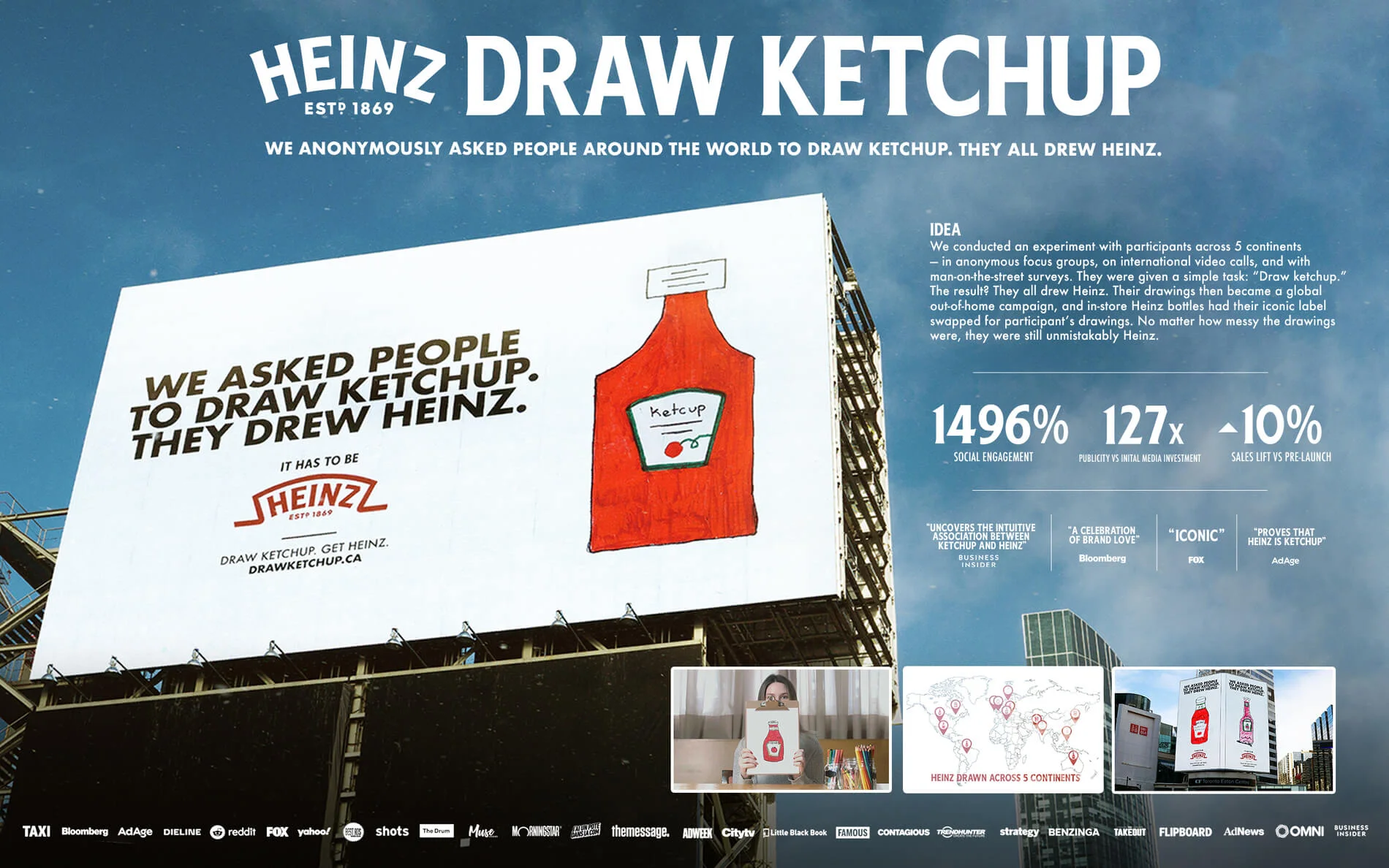 Photo courtesy of Campaigns of the World
Photo courtesy of Campaigns of the World
Emphatic copywriting always begins with a WHY before moving to the WHAT and HOW. The talking points for these are rooted in various data-driven methods such as reviewing customer feedback and evaluating industry competitors.
Instead of focusing on what your customers should do, concentrate on creating a clear and concise copy that tells them a meaningful story. This can eventually lead them to perform your desired outcome.
Develop a sense for data and research
Research is your friend.
This is especially true in an ever evolving digital marketing landscape; making this one of the most critical copywriting tips you'll have to start following to succeed.
Data gathered from various researches can give you valuable insight to make your copies really resonate with your audiences.
Two crucial elements to consider are Voice of Customer (VoC) and Social Listening.
Voice of Customer (VoC) is key to creating customer-centric messaging that truly resonates. Tapping into VoC data, copywriters and marketers can craft personalized content that addresses pain points and builds trust through genuine testimonials. This approach not only sharpens marketing strategies and product development but also refines customer journey mapping, boosting satisfaction and loyalty.
Social listening complements this through monitoring online conversations to capture what customers are saying about a brand and its industry. This insight allows businesses to speak in the audience’s language, address their concerns, and stay ahead of trends. For researchers, social listening offers valuable data for trend analysis and competitor intelligence, leading to more informed decisions. Together, these practices enable brands to connect more effectively with their audience.
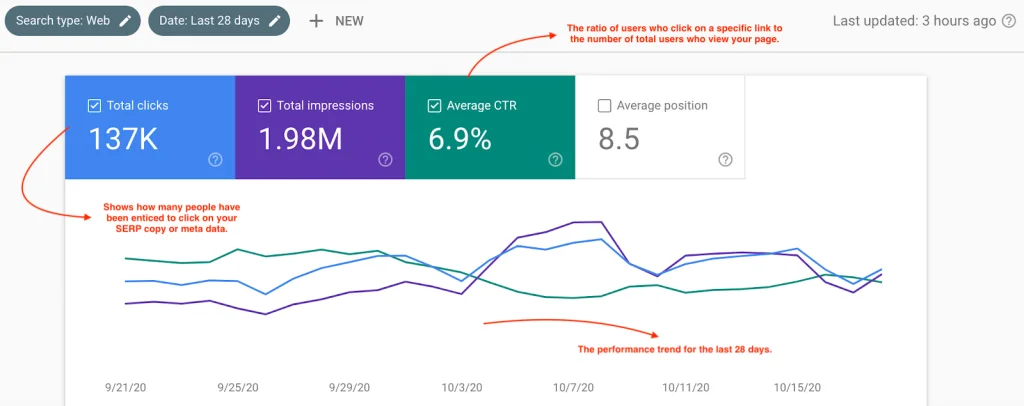
When it comes to researching what kinds of copies work well with audiences, you can always check out case studies and data of good copywriting and how brands reaped their benefits. Google Search Console can provide data on metrics that can tell you which of your copies draw the most clicks and attention that leads to conversion.
Google Analytics 4 (GA4) offers enhanced insights that can significantly benefit copywriting compared to the old Universal Analytics. With its advanced machine-learning capabilities and event-based tracking, GA4 provides deeper understanding of user behavior and engagement. This allows copywriters to create more targeted and effective content, optimizing for audience preferences and trends. The improved data visualization and cross-platform tracking also ensure that the content resonates well across all devices, ultimately leading to better user experiences and higher conversion rates.

Another technical data-crunching technique you can do is A/B testing your copies. This technique means conducting a side-by-side comparison of the engagements two, seemingly resemblant copies garnered – giving you insights on which kind of phrasing, tone, and text best resonated with your audiences.
Experiment with different copywriting frameworks
A good copy requires structure and organization. Not only does this help provide your readers with a logical flow of ideas, but it can also help you remember what points you should include in your copy, depending on the purpose of each.
Below are tried-and-tested copywriting frameworks you can use. After some practice, you’ll soon get the hang of utilizing these frameworks in your copies.
Features - Advantages - Benefits (FAB)
This is one of the oldest tricks in the book. Using the FAB framework, you introduce yourself by enumerating what you do best.
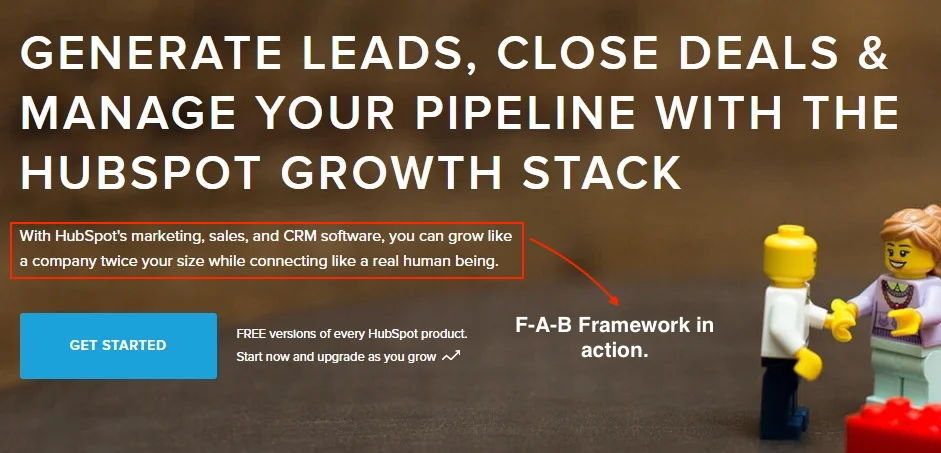
- Features - First, introduce your product’s features.
- Advantages - Follow the above with a short explanation of why your readers should choose your product(s) or service(s), based on features that differentiate it from others in the market.
- Benefits - Top off your story by explaining how choosing your product can benefit your reader.
Problem - Agitate - Solve (PAS)
Sometimes, readers need a little agitation to get them to take action.
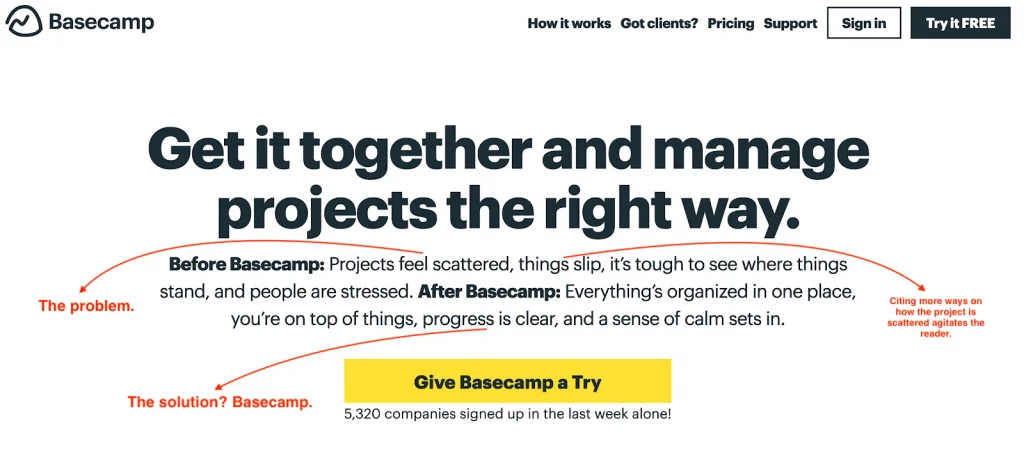
- Problem - Start by presenting a problem to the user, usually in the form of a question.
- Agitate - Follow the above with words to agitate the reader into action. Explain why the problem is bad or how it greatly affects your readers.
- Solve - The aforementioned action is now worded as a solution at the end of your copy.
Attention – Interest – Desire – Action (AIDA)
This is where creative quips come in handy. Thousands of posts flood your readers’ timelines every day. This framework will help pique their interest.
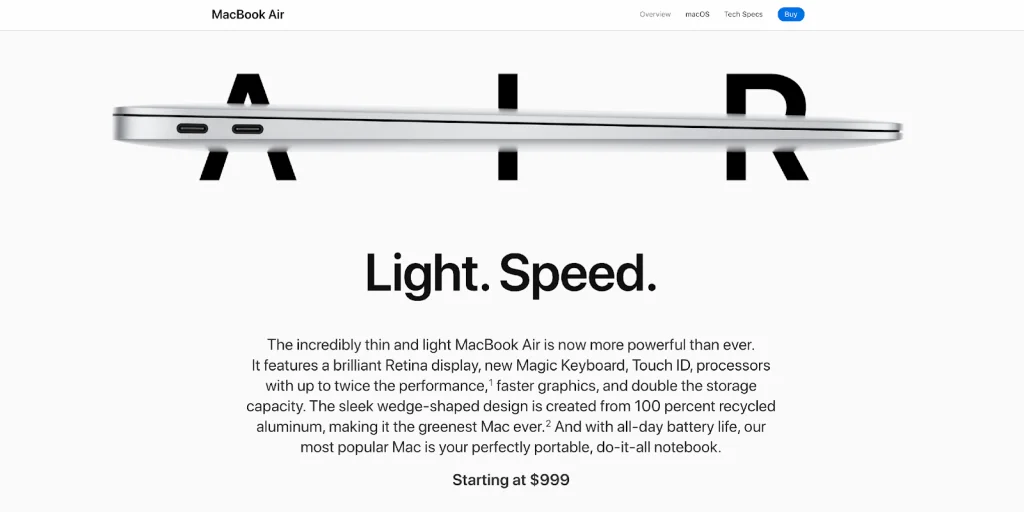
- Attention - Grab your readers’ attention with a quirky or clever lead.
- Interest - Provide new information or compelling stories that are valuable to your reader.
- Desire - Jump on the readers’ attention and interest by explaining how your product can meet their desires.
- Action - Call your reader into action! Ask for a response or direct them to a task.
Conversion Trinity Framework
Developed by Bryan Eisenberg, the Conversion Trinity follows a three-step formula that is bound to provide the conversion you were aiming for. The simple formula forms a realization from the customers that your brand is the solution to their problems.

- Relevance. Are you relevant to my wants/needs/desires?
- Value. Do I know why you are the right solution for me?
- Call to action. Is it obvious what I need to do next?
Remember that these are just frameworks to guide you. You can still develop your own style or even try to mix and match— there's no infinite law to copywriting. Just see what type of copy communicates your message best.
Don’t just get feedback, ask for it
Don’t wait for people to point out what’s wrong with your copy. Be proactive in asking for feedback from friends and colleagues. This can greatly speed up your improvement by helping you see assessment points you are unable to pinpoint on your own.
Keep learning.
And lastly on this list of copywriting tips, remember to always seek to learn new things.
Copywriting, like many marketing processes, changes with technology, and culture. Don’t forget to expand your learning to the context in which your copy will exist. This helps maintain your copywriting skills’ relevance and value, even when times and audiences change.
The pursuit of better ways to connect with your audience should always be at the heart of any brand. This is why producing relevant and valuable copy is important. A copy that catches the readers’ attention already has a high chance of turning those readers into customers. Don’t be afraid to expand your knowledge and try new things. There’s always something new to learn in the world of marketing.
Key takeaways
Good storytelling in marketing has the ability to expand brand awareness and secure brand loyalty. This is why good copywriting is a fundamental element of any digital marketing strategy. To top of this list of copywriting tips, always remember to:
- Know who you're writing for. It’s impossible to produce good copies without knowing your audience. Choosing which stories to tell and voices to use is crucial in connecting with your readers
- Determine your copywriting framework. There are various ways to structure your copy. Make sure your option fits your brand and resonates with your audience to ensure success.
- Develop a good eye for great copy. Adopting an experimental mindset is crucial. Expanding your copywriting skills and deepening your understanding of what makes copy effective will enhance your ability to write compelling content. This will also help you distinguish between high-quality and subpar copy.
Need advanced help on how to get started with copywriting? We can help. Feel free to reach out to us via Facebook, X, or LinkedIn. For copywriting tips for your brand, make sure to subscribe to the Propelrr newsletter and get the straight in your inbox.
